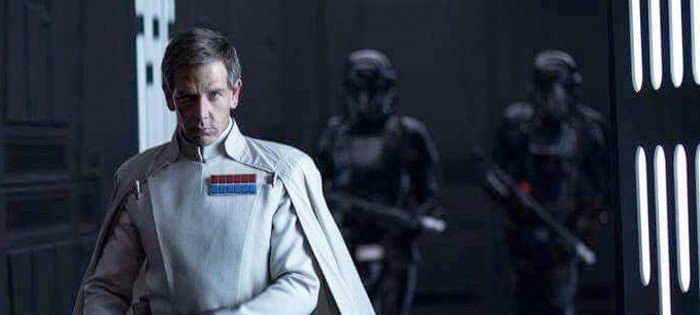some thoughts on Rogue One: Director Krennic
Before we discuss Director Krennic, let’s take a look back at the previous “bad guys” from the Star Wars universe:
First and foremost there is Darth Vader. Darth Vader starts off as “evil” in Episode IV, develops into “evil, but subservient to a greater evil” in Episode V, and, finally, “evil, but conflicted, and eventually redeemed” in Episode VI. Vader’s Terminator-like consistency was part of his appeal, it was what made him terrifying. He wore a mask, you couldn’t know what he was thinking, he destroyed anything that got in his way.
Then there is Emperor Palpatine. Emperor Palpatine is an uncomplicated climber, a man whose pursuit of power didn’t corrupt him at all, because he was evil to begin with. He started out a villainous creep and ended up as, apparently, all Sith Lords end up: killed by his own apprentice.
Then there are garden-variety bad guys like Grand Moff Tarkin, Jabba the Hutt, General Grievous and Nute Gunray, who range from sniveling pawns to grotesque monsters.
What all of them have in common is “they are bad.” In story meetings, when the producer asks “What is the antagonist’s motive?” the poor screenwriter says “He does bad things because he is bad.” That, of course, is how you know you’re writing a melodrama.
(The word “melodrama,” for non-theater-nerds, comes from the theater of early America, where people of many different linguistic backgrounds would all go to the theater to enjoy a play. Because not everyone spoke the language being used on stage, the band in the pit would cue the audience as to how to feel about different characters. A “sweet” character would be given a sweet melody, a “sinister” character would be given a sinister melody, a hero would be given a heroic melody, and so forth. Hence, “melodrama,” a dramatic form where the audience is heavily cued as to the “good and bad” of the narrative. John Williams’s music for the earlier movies used all these tricks to good effect: Luke got a yearning theme, Leia got a gentle theme, Darth Vader got an imperial march.)
The problem with this approach, of course, is that no bad guy ever thinks of himself as “the bad guy.” As Jean Renoir said, “everyone has their reasons.”
Things have improved with the re-launch of the brand and Episode VII. Kylo Ren is a genuine freak, a perverse, warped individual who is compelled to do bad things even when he doesn’t want to, who wears a mask when he doesn’t need to, who reacts with fear and confusion when his worldview is challenged.
And now we have Director Krennic, the most finely-drawn, complex villain we’ve seen yet.
